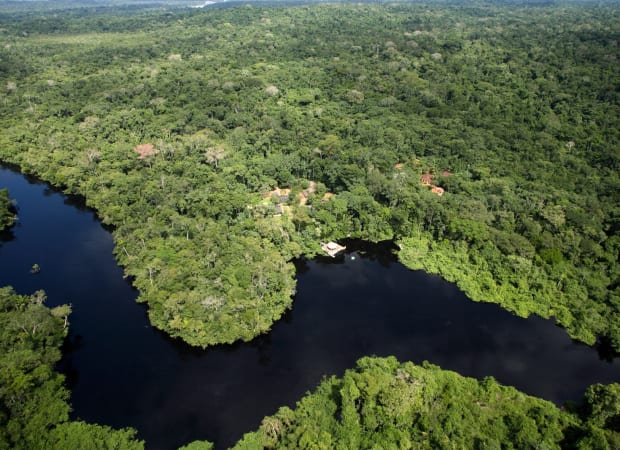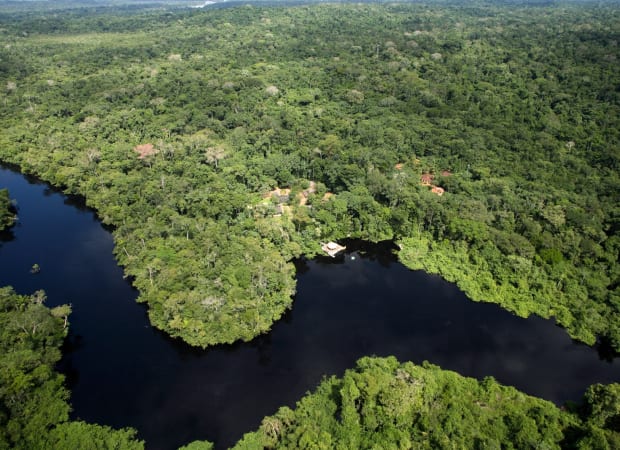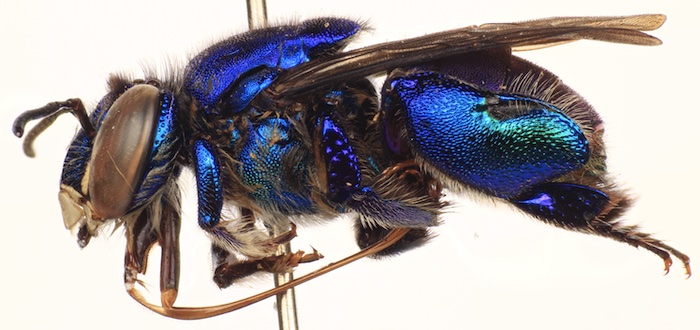Discovering the Soul of the Amazon: A Botanist's Journey Through the Cristalino River

The sheer, overwhelming biodiversity hit me like a wall of humid air the moment I stepped off the small plane at the Cristalino River Lodge. As a botanist specializing in sustainable resource management, the Amazon has always been more than just a rainforest to me; it’s a living library, a complex web of life holding secrets to ecological balance and potential solutions to some of our planet's most pressing challenges. My trip to the Cristalino River region had a dual purpose: to continue my research on the effects of deforestation on Amazonian orchids, particularly Cattleya violacea, and to experience firsthand the region's growing eco-tourism initiatives, a crucial aspect of its long-term preservation.
Kayaking the Cristalino: An Encounter with Giant River Otters
My exploration began with a kayaking excursion down the Cristalino River, a blackwater tributary teeming with life. The stillness of the water was broken only by the gentle dip of our paddles and the calls of unseen birds hidden within the dense foliage. The riverbanks were a riot of green, a tapestry woven from countless species of plants, each playing a vital role in this intricate ecosystem.
Then, the magic happened. A family of giant river otters (Pteronura brasiliensis) emerged from the shadows, their sleek bodies glistening in the dappled sunlight. These playful creatures, critically endangered due to habitat loss and hunting, are a true emblem of the Amazon's wild spirit. Photographing them proved challenging; the low light conditions of the rainforest made it difficult to capture their agility and grace. But the experience of witnessing them in their natural habitat was reward enough.
Learning from the Land: Traditional Medicine in a Ribeirinho Village
A visit to a local ribeirinho (river dwelling) community offered a deeper understanding of the symbiotic relationship between the rainforest and its people. With the utmost respect for their traditions and privacy, I had the privilege of learning about traditional rainforest medicine from a village elder. She shared her profound knowledge of plants and their healing properties, knowledge passed down through generations.
One plant that particularly caught my attention was Andira anthelmintica, traditionally used to treat parasitic infections. She explained how the bark of this tree is carefully harvested and prepared to create a potent remedy, a testament to the rainforest's incredible pharmaceutical potential. This experience underscored the importance of preserving not only the biodiversity of the Amazon but also the invaluable knowledge held by its Indigenous communities.
Ethical photography in the Amazon
When visiting indigenous communities in the Amazon, remember these tips:
- Seek Consent: Always ask permission before taking photographs or videos of individuals or their communities. Respect their decision if they decline.
- Cultural Sensitivity: Be mindful of local customs and traditions. Avoid capturing images that could be considered disrespectful or exploitative.
- Reciprocity: Consider offering something in return for their time and knowledge, such as donating supplies or supporting community projects.
- Authenticity: Focus on capturing authentic moments and interactions rather than staged or contrived scenes.
- Awareness: Be aware of the potential impact of your images on the community and avoid perpetuating stereotypes or misinformation.
A Symphony of Wings: Birdwatching in the Amazonian Canopy
The next morning, I joined a birdwatching tour led by a knowledgeable local guide. His keen eyes and ears were attuned to the subtle sounds of the rainforest, allowing him to identify species that would have remained hidden to me. Despite the challenges of photographing birds in the dense canopy, we were fortunate enough to spot several remarkable species.
We witnessed the majestic flight of a Hyacinth Macaw (Anodorhynchus hyacinthinus), its vibrant blue plumage a stark contrast to the green foliage. We observed the prehistoric-looking Hoatzin (Opisthocomus hoazin) perched on a branch, its distinctive crest and guttural calls marking its presence. And finally, we caught a glimpse of the elusive Amazonian Umbrellabird (Cephalopterus ornatus), its unique umbrella-like crest a testament to the rainforest's extraordinary biodiversity. The light was difficult, and I was not able to get good photos but was able to watch these birds with the aid of some very good binoculars.

Sustainable Flavors: Pirarucu and Cupuaçu
One evening, I had the pleasure of enjoying a meal featuring pirarucu fish (Arapaima gigas), prepared in a traditional Amazonian style. Grilled with Brazil nuts and served with cassava flour, the pirarucu was a culinary delight. The chef told me about the importance of sustainable fishing practices for preserving the pirarucu population, which has been threatened by overfishing in the past. Sustainable fisheries management is critical to maintain biodiversity in the area.
For dessert, I savored the unique flavor of cupuaçu (Theobroma grandiflorum), a fruit related to cacao. Its taste was a surprising blend of chocolate and pineapple, a truly Amazonian experience. I learned that sustainable cupuaçu farming has the potential to provide economic opportunities for local communities while protecting the rainforest from deforestation.
A Landscape Under Threat: Deforestation and its Impact
As a botanist, I was constantly captivated by the lush, vibrant landscape of the Amazon. The intricate relationships between plant species, the humid air thick with the scent of decaying leaves, the cacophony of insect sounds – it was a sensory symphony of life. However, my appreciation was tempered by the visible impact of deforestation.
I witnessed cleared areas where rainforest once stood, replaced by cattle pastures or soy plantations. The loss of biodiversity was palpable. Deforestation rates in the Amazon remain alarmingly high, with estimates suggesting that an area the size of a football field is lost every minute. This destruction has a devastating impact on orchid populations, including Cattleya violacea, which relies on specific microclimates and host trees for its survival. Studies show that orchid diversity decreases by as much as 50% in fragmented forest areas.
One afternoon, while hiking through a remote section of the forest, I witnessed illegal logging activity firsthand. The sound of chainsaws echoed through the trees, a stark reminder of the forces threatening this irreplaceable ecosystem. Seeing this illegal activity filled me with a sense of despair.
Capturing the Amazon: Photography Recommendations
Photographing the Amazon rainforest presents unique challenges, but with the right gear and techniques, you can capture its essence.
Camera Gear:
- A full-frame camera with excellent low-light performance, such as the Sony a7S III, is ideal.
- A versatile zoom lens, like a 24-105mm, will allow you to capture both wide landscapes and wildlife.
- A macro lens, such as the Sony 90mm macro, is essential for capturing the intricate details of plants and insects.
- A sturdy tripod is crucial for long exposures in the dim rainforest light.
Composition:
- Use leading lines to draw the viewer's eye into the dense forest.
- Capture wide shots to showcase the scale of the rainforest.
- Focus on close-ups to highlight the intricate details of individual plants and animals.
- Pay attention to the light filtering through the canopy, using it to create dramatic and evocative images.
Take Action: Protecting the Amazon for Future Generations
The Amazon rainforest is facing unprecedented threats, but there is still hope. By supporting sustainable tourism initiatives, donating to conservation organizations, and making responsible consumer choices, we can all play a role in protecting this vital ecosystem.
- Support sustainable tourism initiatives in the Amazon: [Vistalocation.com].
- Donate to conservation organizations: Amazon Watch and Rainforest Action Fund.
- Look for products certified by the Forest Stewardship Council (FSC).
#viralvideo
The beauty and fragility of the Amazon rainforest
In the video, the scene opens with a close-up shot of a vibrant blue morpho butterfly (Morpho menelaus) rapidly opening its wings, filmed in extreme slow-motion (240fps). The video is styled with a cinematic, documentary-style aesthetic. The lighting is natural, capturing the golden hour light filtering through the rainforest canopy. The camera work is professional, using a high-speed camera (e.g., RED Komodo) to capture the intricate details of the rainforest. The butterfly suddenly lands on Olivia's hand, revealing her in the foreground, looking directly at the camera with a surprised but delighted expression. She whispers, "This is why we must protect it."
Concluding Thoughts
My journey to the Cristalino River region renewed my sense of urgency and commitment to conservation. The Amazon is not just a collection of trees and animals; it’s a complex, interconnected web of life that sustains us all. We must act now to protect it, not only for the sake of its incredible biodiversity but for the future of our planet. Let's work together to ensure that future generations can experience the wonder and beauty of the Amazon rainforest.
